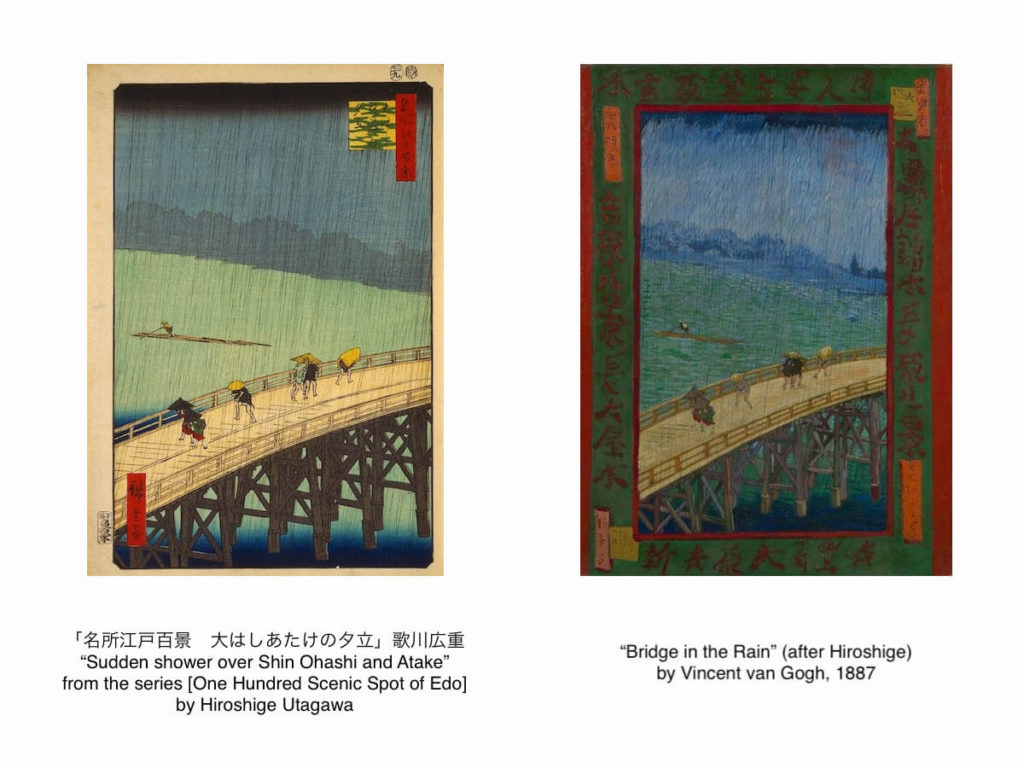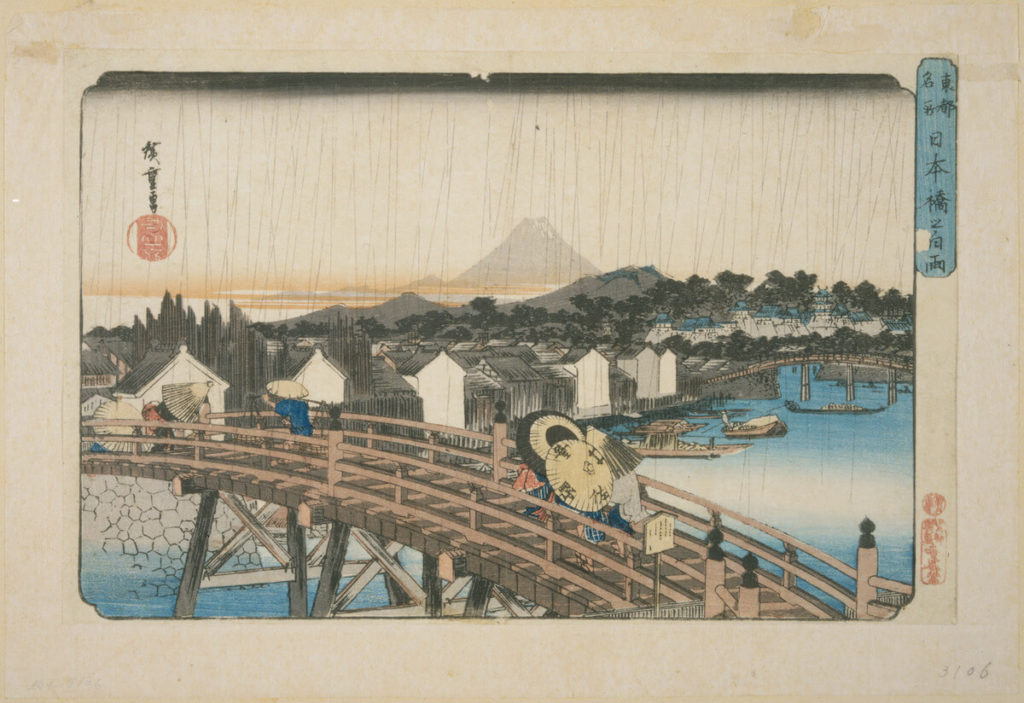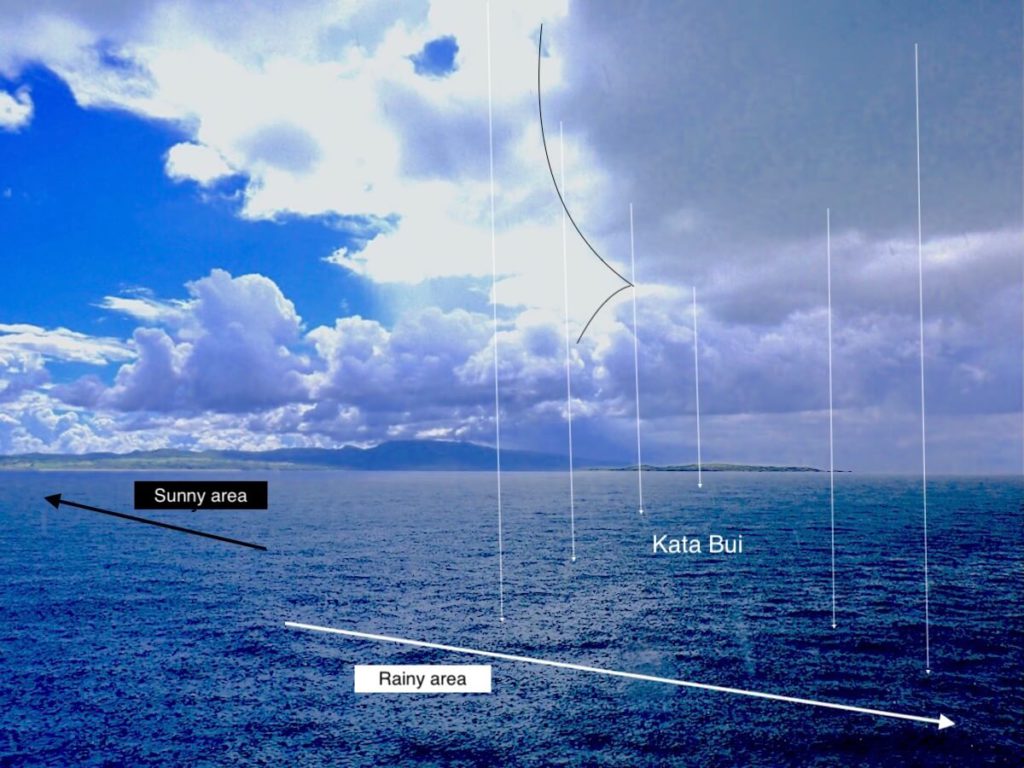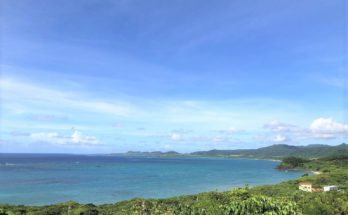How many rain expressions do you imagine in Japanese?
It is said that there are more than 100 words related to rain in Japanese. Those expressions can be seen not only in classical literature but also in daily life even now.
The Japanese art print “Ukiyoe” (浮世絵) by the artist Hiroshige Utagawa (歌川広重) has been famous for his expressive depictions of rain, and his works had a great impact on Western art during his life (early-mid 1800s).
I think people who live in Japan have been having special feelings about rain and the rainy season since the old days. Today, let me introduce a few curious words that have to do with rain.

What does “Tsuyu” mean?
In Japan, we call the rainy season “Tsuyu” (梅雨), but our rainy season is a little different from the rainy season in some countries of Southeast Asia or near the equator. In the subtropical islands of Okinawa, the southernmost region of Japan, the Tsuyu is quite strong and comes a month earlier than in mainland Japan. Tsuyu lasts from the beginning of June to the end of July in the mainland and from May to the middle of June in Okinawa. On the flip side, Hokkaido, at Japan’s northern end, barely gets affected by Tsuyu.
Tsuyu is the name of a phenomenon that is endemic to China, Korea, and Japan. It was originally a word from China, named after the season when a plum (Ume, 梅) bears fruit. According to meteorology, at the end of spring, a high pressure zone that develops over from the Asian continent meets a monsoon air group that moves from the South China Sea, which creates a front. This seasonal rain front is called a baiu front (Baiu zensenn, 梅雨前線) and it gradually moves from south to north. The rain caused by this front’s stagnation in various places is called “Tsuyu.” Tsuyu is another way of reading the characters for “Baiu.”

There are many cloudy and rainy days in most of Japan during Tsuyu. This is a notoriously humid season. This is not only uncomfortable, but also it is easier for things to get moldy.
Tsuyu is an important milestone in the change between spring and summer, and is one of the important seasons of Japan. There are many words and expressions related to this rainy season because June is an important month for rice planting.
The name of rain
Here are some expressions that have to do with Tsuyu rain.
“Nyuubai” (入梅) means “entering the season of Tsuyu.” The rain just before this season is called “Hashiri Tsuyu” (走り梅雨), meaning “running into Tsuyu.” A heavy rain accompanied by thunder near the end of the season is called “Abare Tsuyu” (暴れ梅雨), meaning “rampaging Tsuyu.”
Tsuyu rainfalls are often called “Samidare” (五月雨), which means “rain in May.” In this case, it refers to May in the lunar calendar and to the long rain that falls as we enter the Tsuyu season.
“Bakuu” (麦雨) means “wheat and rain,” and it means a rain which falls around May 31 to June 4 during the harvest season of wheat. “Mizutori ame” (水取雨) means “taking water and rain,” a rain that gives the water for rice planting. Water in this season plays an important role in the rice field.

“Ono, Distant View of Mt.Daisen in Hoki Province” from the Series [Famous Places in the Sixty-odd Provinces]
by Hiroshige Utagawa
There are many names for rain in Japan because rain is very important for agriculture. “Kokuu” (穀雨) and “Zuiu” (瑞雨) are familiar words for farmers and refer to the rain that waters the land and encourages grain growth. “Koku” means “grain” and “Zui” means “fresh and young.”
“Jiu” (慈雨), ”Kiu” (喜雨), and “Kanu” (甘雨) are welcome rain after a drought. Those Kanji characters mean “affection,” “delight,” “sweet” and “rain.”
Do you have any idea for the name of the rain in midsummer?
“Niwaka ame” (俄雨) is a rainshower that suddenly begins to fall and stops after a while. “Niwaka” (俄) means “sudden and abrupt.” A rainshower from the bright sky in summer is called “Hakuu” (白雨), meaning “white rain.”

Source: ColBase (https://colbase.nich.go.jp/)
“Sunshower at Nihonbashi Bridge” from the Series [Famous Places of the Eastern Capital] by Hiroshige Utagawa

“Evening Squall at Shono” from the Series [Fifty-three Stations on the Tokaido]
by Hiroshige Utagawa
Strong and heavy downpours are called “Kiu” (鬼雨), which suggests that the heavy rain is the work of the demon Oni (鬼).
“Tenki ame” (天気雨) is a sunshower, a light rain while the sun shines, and literally means “weather” and “rain.” It can also be called “Tenkyuu” (天泣), which means “heaven” and “cry.” However, interestingly, we often call a sunshower “the bride of a fox.” There are some legends about the origin of this expression, and I will talk about one of them.
The bride of a fox (Kitsune no yome iri)

“Oji, the bride of a fox at Mt. Asuka, Eastern Capital” by Hiroshige Utagawa
I mentioned we call a sunshower “the bride of a fox” (Kitsune no yomeiri, 狐の嫁入り) It has been said in Japan that foxes possess strange powers. Similar to the will-o’-the-wisps in Western folklore, Japan has tales about glowing lights in the mountains and forests. In Japan, we say that these lights are from foxes and that are called “Fox Fire” (Kitsune bi, 狐火). These lights often appear in a long line, flickering, disappearing, and then multiplying. This led people to think that it might be foxes taking part in a traditional Shinto wedding procession called “Hanayome gyouretu” (花嫁行列). In our folklore, sometimes these lights are connected with sunshowers and other strange things that the foxes might be doing.
Do you know any expressions about sunshowers in other countries? I found that other cultures talk about the bride of a monkey, a tiger, a bear and the devil instead of a fox. Please let me know how you describe this kind of rain in your country!
Rain in Okinawa
There are a couple of special words for rain here in Okinawa. Often, there is a lot of tropical rain which only comes down from the fullest clouds. The rain falls hard only in a tiny area, and if you move just a few hundred meters away, the sun appears. This is called “Kata Bui” (カタブイ). “Kata” means “one side” and “Bui” means “raining” in the Okinawan dialect.

In Okinawa, the sunshower is called “Tiida Ami” (てぃーだあみぃ). “Tiida” means “sun” and “Ami” means “rain.” Rain which enters strongly with wind is “Uchi Ami” (うちあみ). “Uchi” means “hit” and “Ami” means “rain.”
It is common for the rain to fall hard in only a small area in Okinawa, so many islanders don’t carry umbrellas. If it rains, they’ll just take shelter for about ten minutes or more until the rain stops. Furthermore, if it rains hard like a typhoon, nobody uses an umbrella because that won’t make sense or work well. So, that is what Okinawan people do!
Diving instructor, tour conductor, and officially licensed Okinawan interpreter and tour guide. Yuka was born in Hiroshima but graduated from the Institute of Technology in Tokyo. After a few years of working as an engineer in Ibaraki, she settled down on a southern island called Ishigaki, which is located between Okinawa and Taiwan. For over 15 years, Yuka has been a guide and interpreter between nature and people. She is interested in cats, dolphins, traveling, spacecrafts, MARVEL, and Disney.




